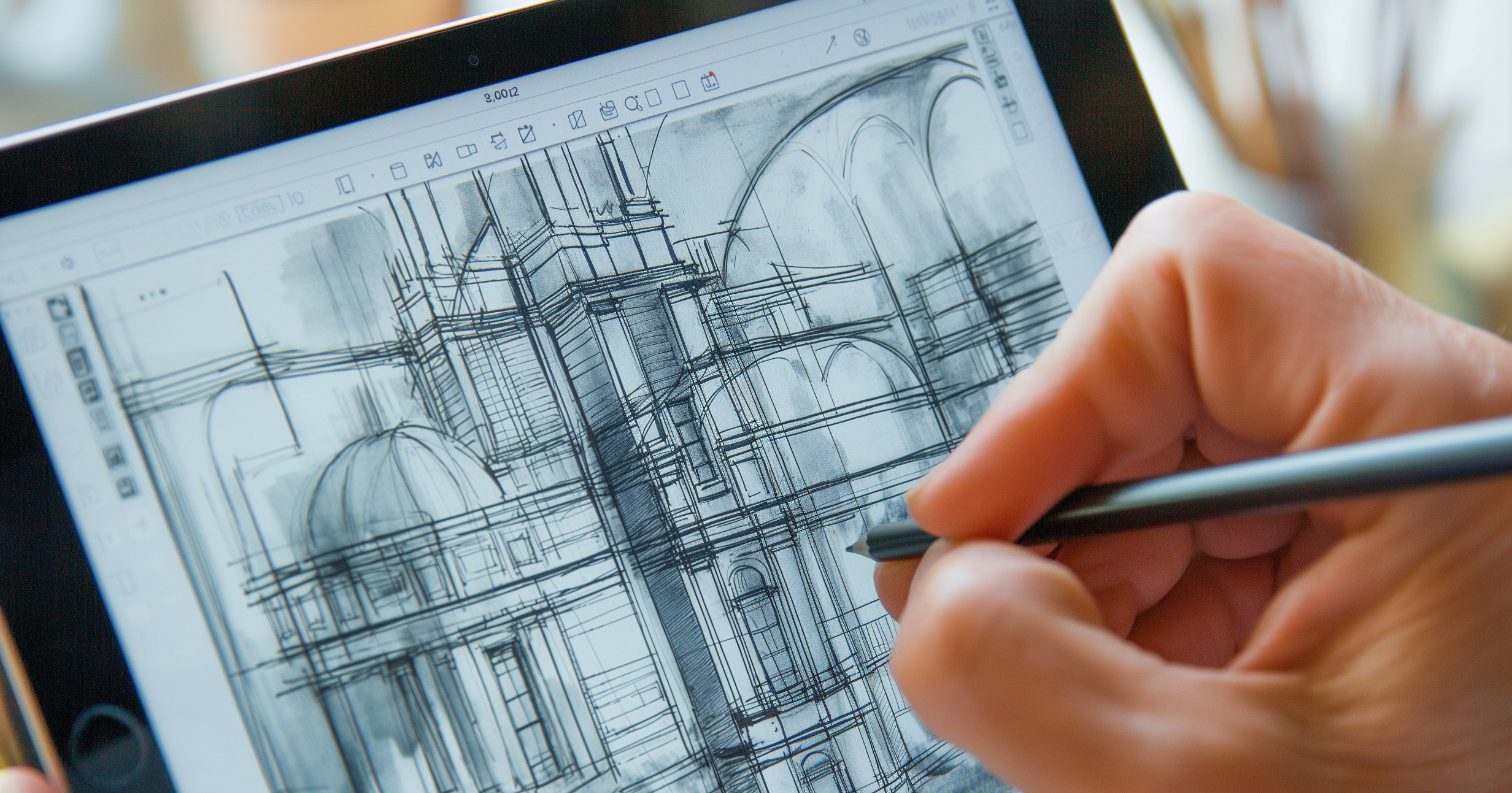Last chance: The 14th Architizer A+Awards celebrates architecture's new era of craft. Apply for publication online and in print by submitting your projects before the Final Entry Deadline on January 30th!
The examination of repurposing the roof materials from the Montréal Olympic Stadium in the recently published article on the Olympic construction dilemma, has prompted me to explore the broader implications of recycling construction waste. As the stadium prepares to dismantle its roof, an international competition invites architects and students to explore this forward-thinking approach’s potential benefits and challenges in shaping sustainable practices within the architectural domain.
Recycling construction waste stands out for its capacity to advance sustainability in the construction industry and reduce greenhouse gas emissions. However, it is important to acknowledge the potential costliness associated with demolishing or dismantling existing structures — according to Bloomberg, the demolition industry is currently valued at $8.7 billion.
Breaking Ground: Creative Approaches to Construction Waste
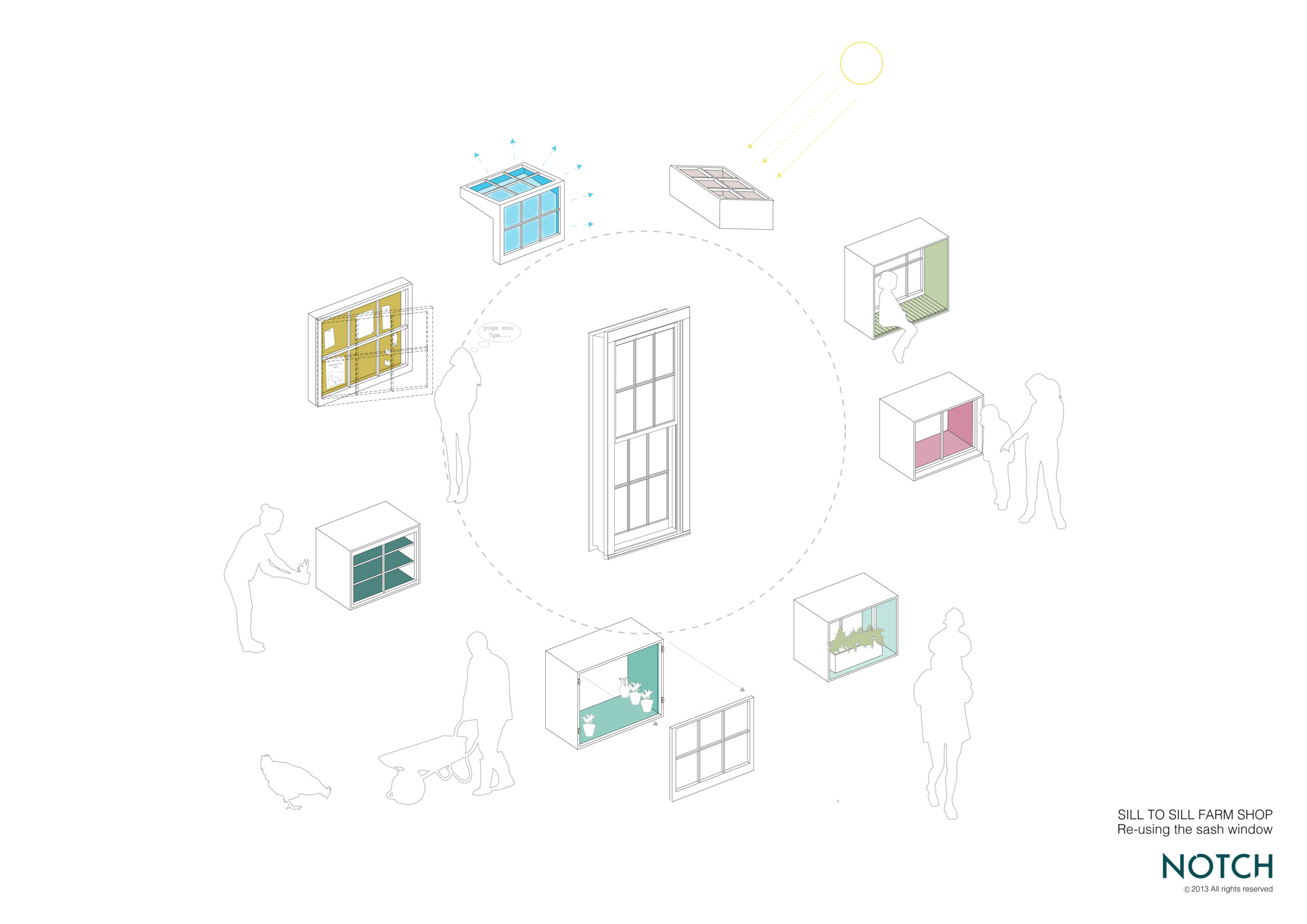
Diagram illustrating the winning entry for an architecture competition held by Hackney City Farm, showcasing the repurposing of sash windows by Studio Notch, London, United Kingdom
Environmental awareness fuels numerous initiatives to promote the reuse of construction materials and debris by highlighting the ecological impact of construction waste on landfills and natural resources. The international competition for ideas to repurpose the Montréal Olympic Stadium’s roof components is a noteworthy example among many.
Another example is the architecture competition held by Hackney City Farm, an environmental charity based in East London. The competition brief called for the design of a new plant shop, fruit and vegetables. Participants were encouraged to explore construction techniques using recycled materials, buying into the farm’s sustainable ethos, and demonstrating the potential of urban waste as a building material. The winning entry proposes a design that seeks out and reuses discarded timber sash windows, relocating them across the façade of the new shop. These windows are given new life as benches, counters, skylights, notice boards or shelves, displaying plants and herbs while flooding the interior with light.
New York-based designers New Affiliates, in partnership with architect and historian Samuel Stewart-Halevy, launched Testbeds, an initiative to repurpose architectural mock-ups from large-scale projects, turning them into shade structures, classrooms and sheds for community gardens in New York City. This initiative, a collaboration with local government and gardeners, reflects New Affiliates’ commitment to transforming construction waste into resources. Mock-ups, often made of high-end materials, are typically discarded after reviews, resulting in significant waste.
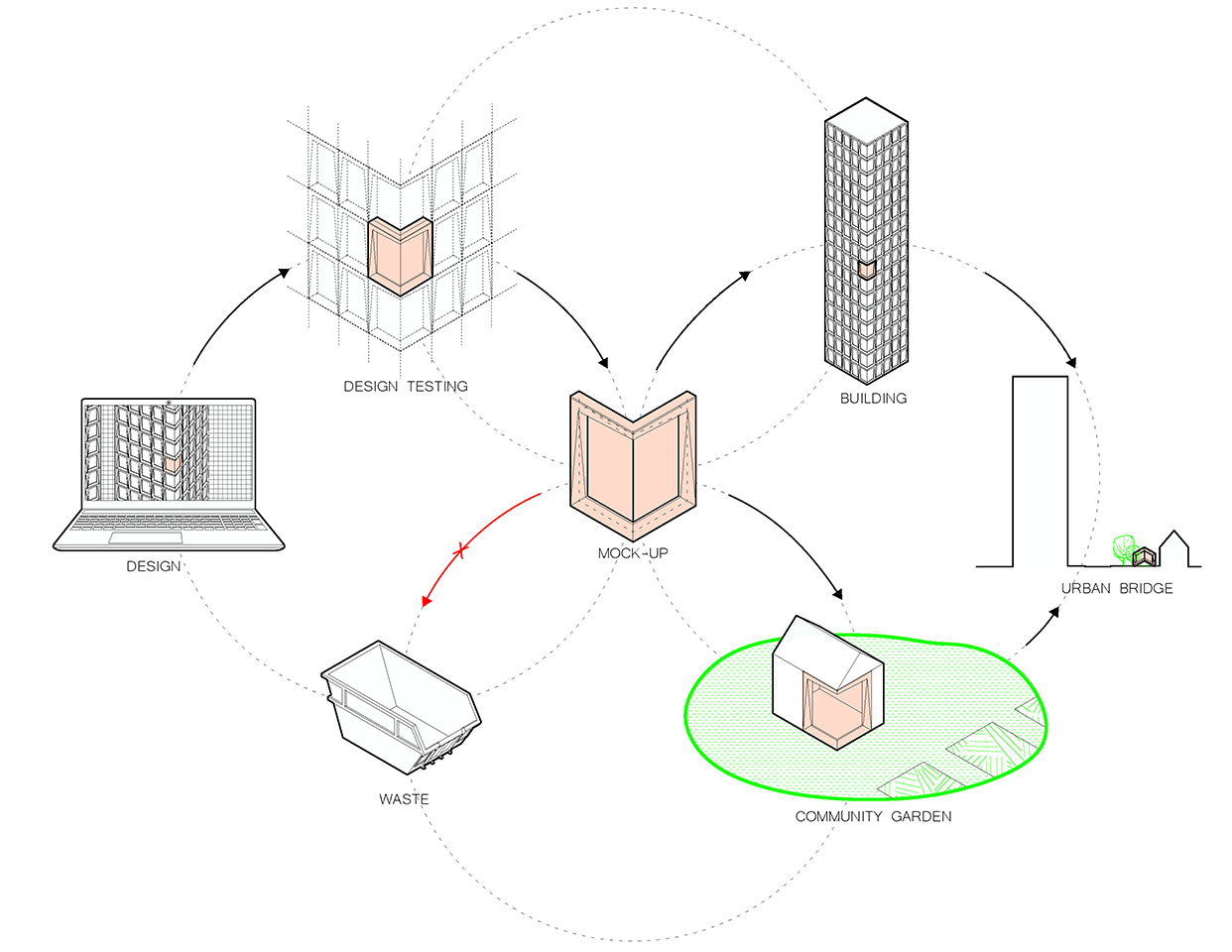
Diagram illustrating Testbeds by New Affiliates in New York City is an initiative to repurpose architectural mock-ups from large-scale developments into equipment for community gardens.
Testbeds aims to redirect resources from luxury real estate to disinvested neighborhoods in a coordinated effort involving community garden boards, city agencies, and developers. The pilot project transforms a mock-up from the Tribeca condominium 30 Warren into a multipurpose structure for the Edgemere Coalition Community Garden, featuring a meeting room, greenhouse and tool shed under a shade-producing roof.
Creativity Meets Sustainability: Innovating with Reclaimed Materials
Architecture competitions serve as platforms for architects and designers to showcase their creativity by finding inventive ways to incorporate reclaimed materials into their projects. Through creative solutions, architects demonstrate how reclaimed materials can be transformed into functional and aesthetically pleasing structures. In the context of reusing construction materials and debris, architectural competitions highlight the intersection of creativity and sustainability. An emphasis on reuse not only minimizes the environmental impact of construction activities but also fosters a culture of resourcefulness.
By repurposing materials salvaged from demolition or renovation projects, architects and builders can significantly reduce the demand for new resources, hence mitigating the environmental impact associated with the extraction and manufacturing processes of new materials. Thoughtful material reuse can contribute to the conservation of resources and minimize energy consumption. Moreover, this practice promotes more efficient and sustainable waste disposal practices. By diverting construction and demolition waste from landfills, the reuse of reclaimed materials contributes to the reduction of greenhouse gas emissions and alleviates the burden on waste management infrastructure.
Innovative Initiatives: Waste Reduction and Material Recovery
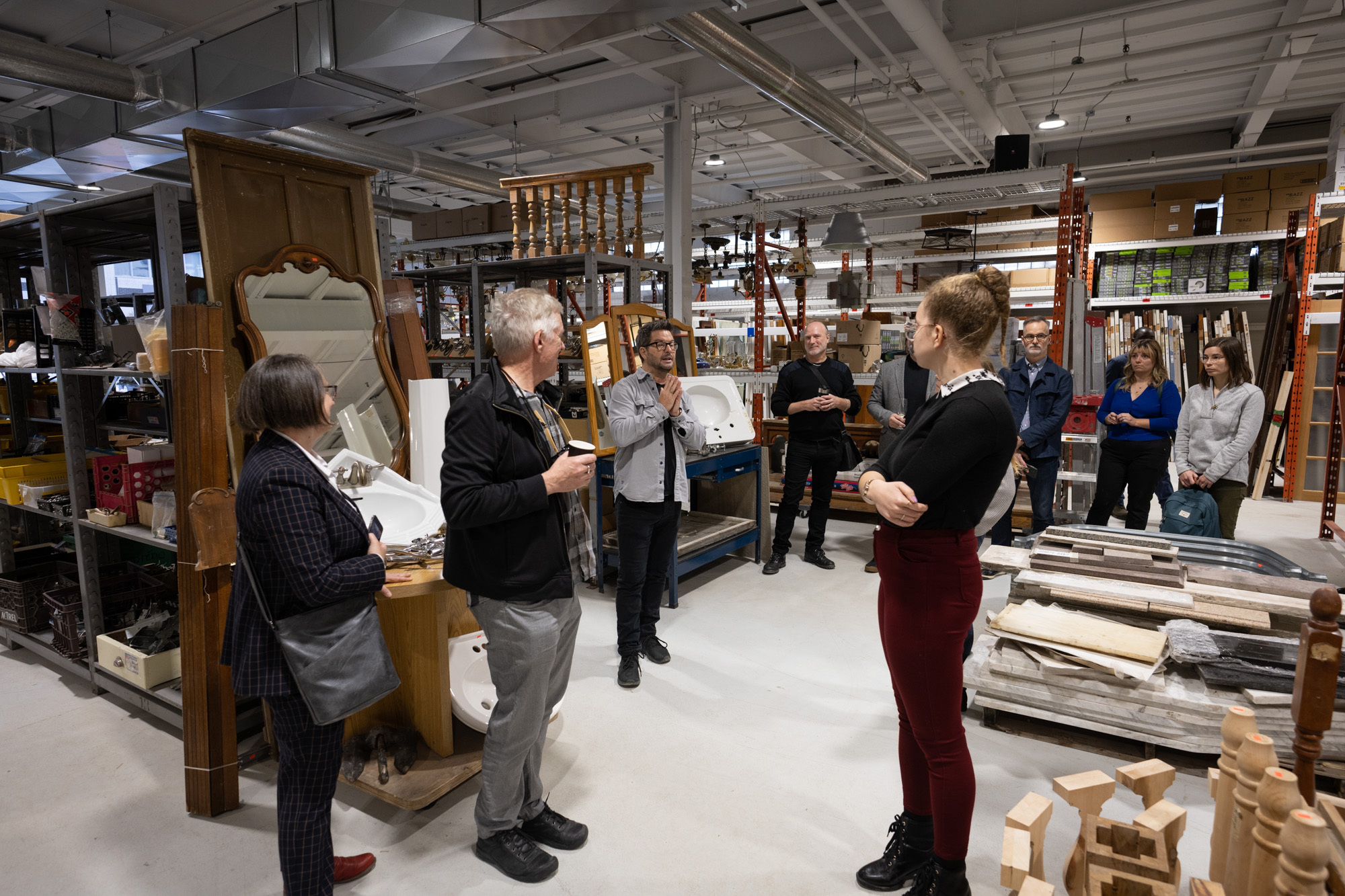
New construction material reuse center, by Architecture Without Borders Quebec (AWBQ), Montréal, Canada. | Photo by Philippe Latour
In addition to architectural competitions, the commercialization of by-products from building demolition and dismantling has emerged as a powerful tool for promoting sustainability in the construction sector. This innovative practice not only diverts waste from landfills but also creates economic opportunities and promotes responsible resource management. As the construction industry continues to evolve towards more sustainable practices, the commercialization of demolition by-products stands out as a promising strategy for driving positive environmental change.
RÉCO, a project of Architecture Without Borders Quebec (AWBQ), pioneers an ecological initiative focused on recovering and reselling construction materials. RÉCO relies solely on donations from businesses and individuals, some of whom may receive a charitable receipt. Built on principles of sustainability, innovation, solidarity, and excellence, RÉCO emerges as a transformative force in the construction industry, playing a crucial role in minimizing construction waste, safeguarding built heritage, and safeguarding the environment.
Prioritizing Safety: Testing Protocols for Recycled Construction Waste
When recycling construction waste, it is important to prioritize the safety and quality of reclaimed materials. Thorough assessments are conducted to ensure that the recycled materials meet strict safety standards and do not pose any risk to human health or the environment. This process involves rigorous toxicity, microbiological, and leaching testing, among others, to identify any potential contaminants or hazardous substances present in the reclaimed materials. By ensuring the safety and quality of recycled construction materials, we can confidently adopt sustainable practices without compromising safety or environmental well-being.
Regulatory bodies such as the Environmental Protection Agency (EPA) establish standards and regulations for environmental protection, encompassing guidelines for the safe handling and disposal of construction waste. Other organizations, like the American Society for Testing and Materials (ASTM) and the International Organization for Standardization (ISO), develop protocols for testing the quality and safety of construction materials, including those that have been recycled.
Cost versus Benefit: The Environmental and Economic Case for Repurposing Construction Waste
While repurposing construction materials and debris resulting from dismantling existing structures holds immense environmental and economic benefits, it often faces challenges due to the perceived costliness of demolishing or dismantling existing structures. However, it’s essential to recognize that the long-term benefits of repurposing, such as reduced environmental impact, resource conservation, and potential cost savings, outweigh the initial costs associated with demolition. Embracing the practice of repurposing construction waste requires a shift in perspective towards prioritizing sustainability and resource efficiency, ultimately contributing to a more environmentally conscious and resilient construction industry.
Redefining Construction: Architecture and Design’s Role in Environmental Preservation
The staggering volumes of construction waste dumped in landfills highlight the magnitude of an important environmental problem, emphasizing the urgent need for comprehensive solutions to address the significant environmental impact caused by inefficient waste management practices within the construction industry. Amidst this pressing concern, innovative initiatives in architecture and design are emerging as crucial contributors to promoting sustainability and resourcefulness within the industry.
The showcased innovative initiatives emphasize architecture and design’s crucial role in promoting sustainability and resourcefulness in the construction industry. Architectural competitions provide dynamic platforms for architects to integrate reclaimed materials, showcasing creativity intersecting with sustainability. As environmental consciousness grows, these initiatives extend their reach to the wider architectural community, fostering a culture of innovation and environmental stewardship. Projects like RÉCO demonstrate how organizations can lead ecological initiatives, reducing waste and preserving the environment. Despite challenges like the perceived cost of repurposing materials, the long-term benefits outweigh initial investments. Prioritizing sustainability and resource efficiency can drive positive environmental change and foster a more resilient construction industry for future generations.
Last chance: The 14th Architizer A+Awards celebrates architecture's new era of craft. Apply for publication online and in print by submitting your projects before the Final Entry Deadline on January 30th!
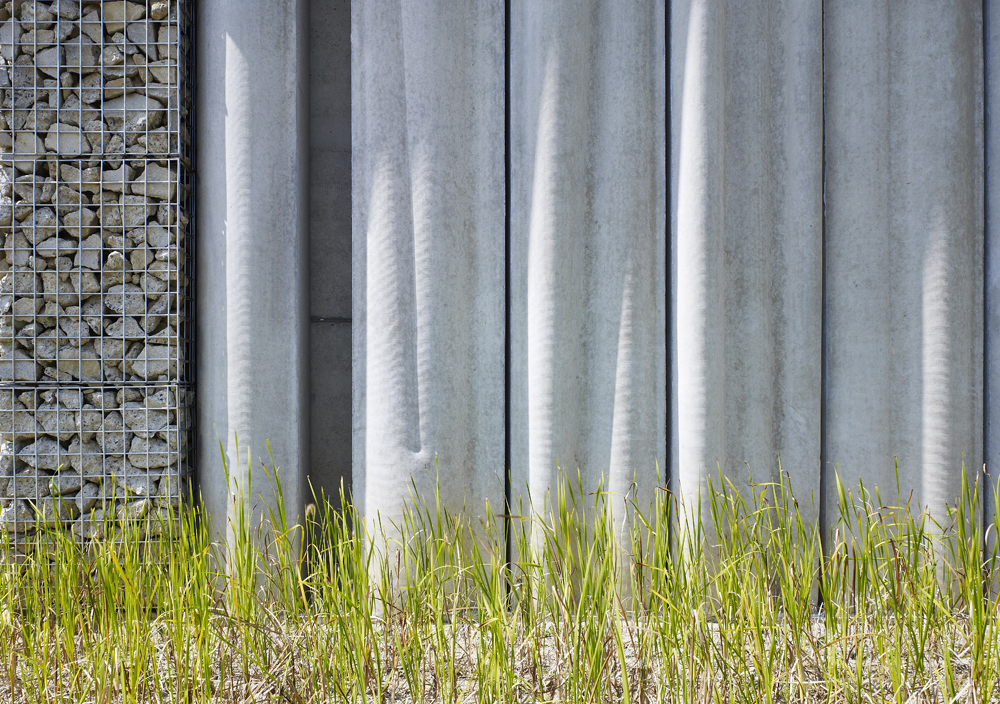
 Hanil Cement Information Center and Guesthouse
Hanil Cement Information Center and Guesthouse  Sill to Sill, Hackney City Farm
Sill to Sill, Hackney City Farm  Testbeds
Testbeds 